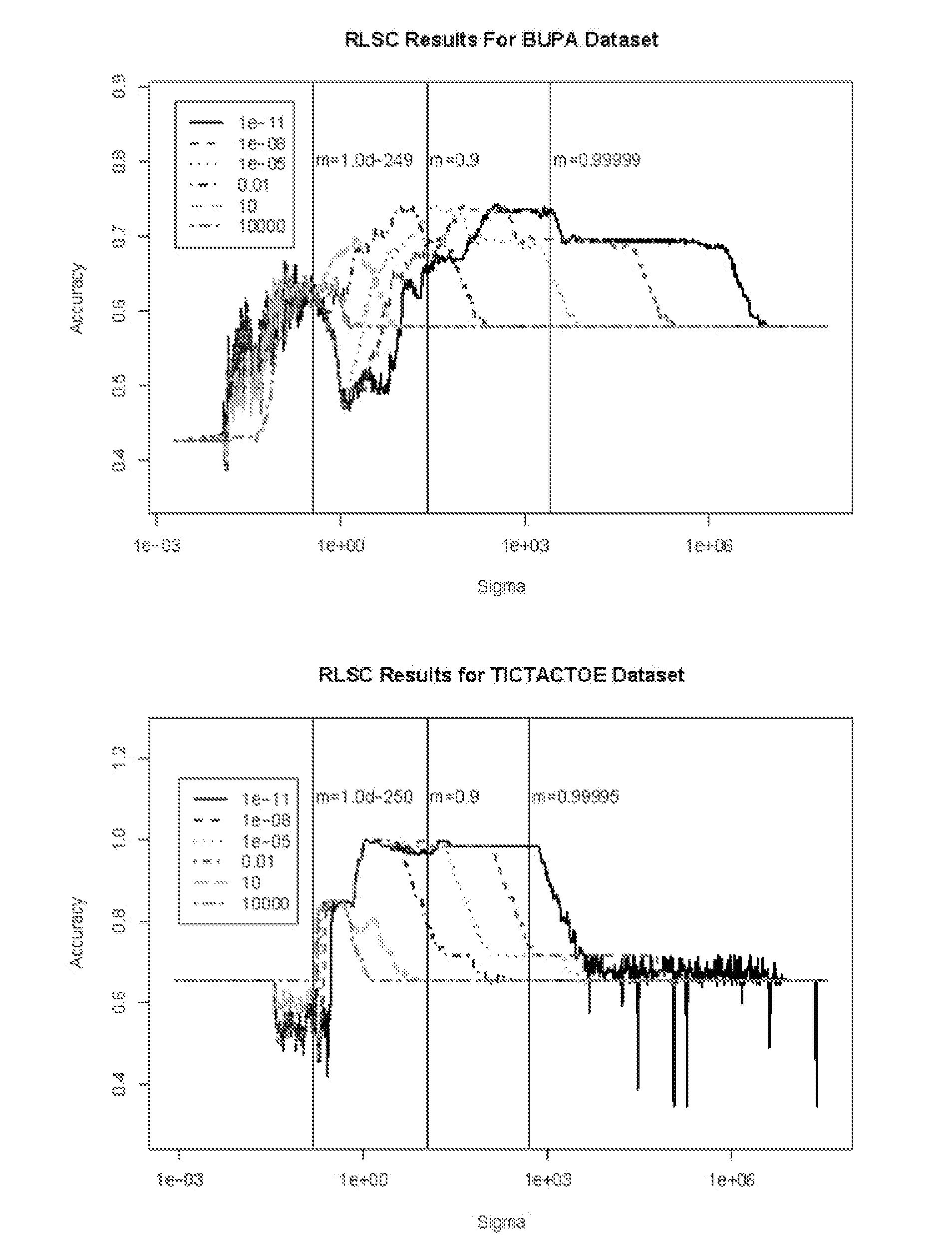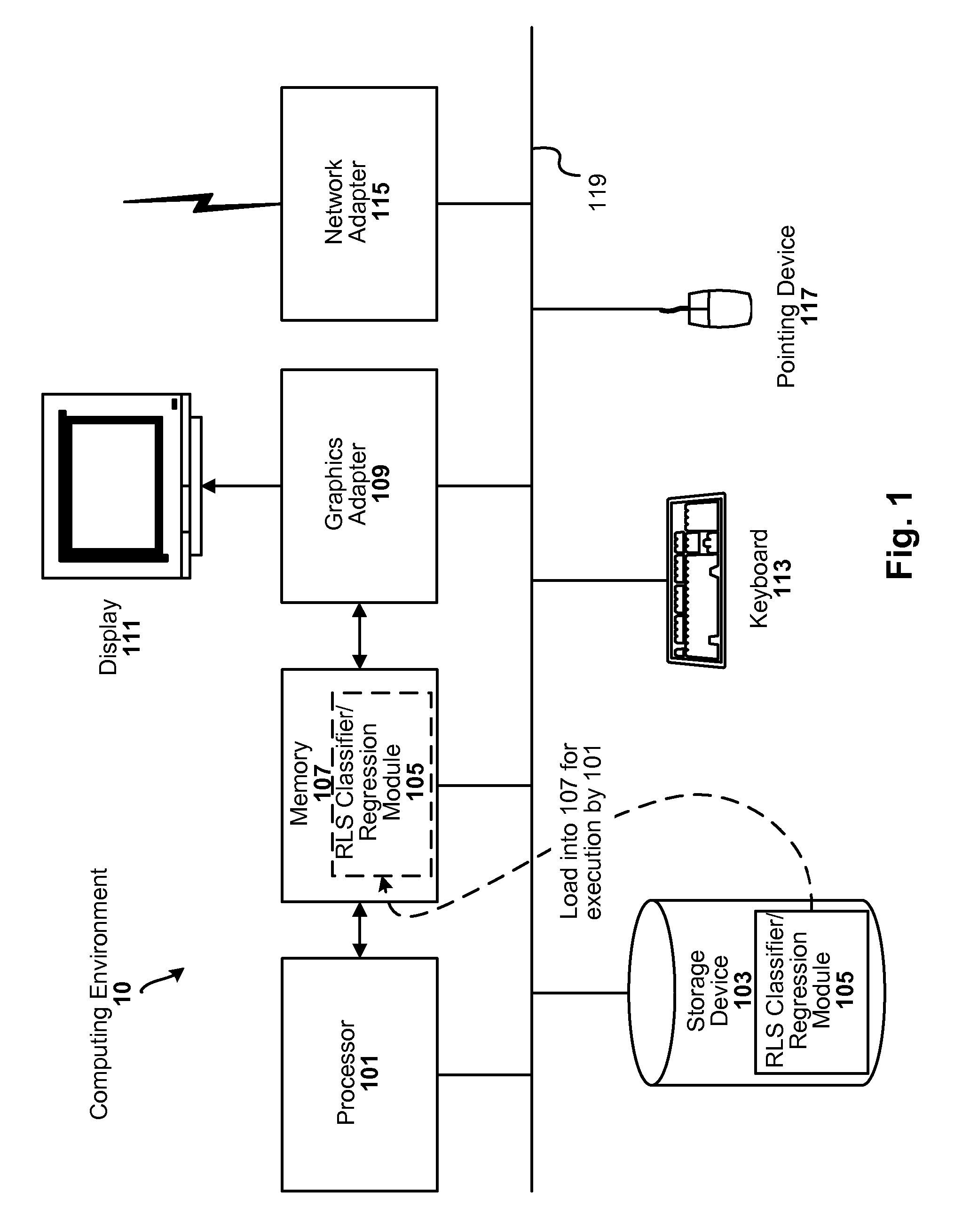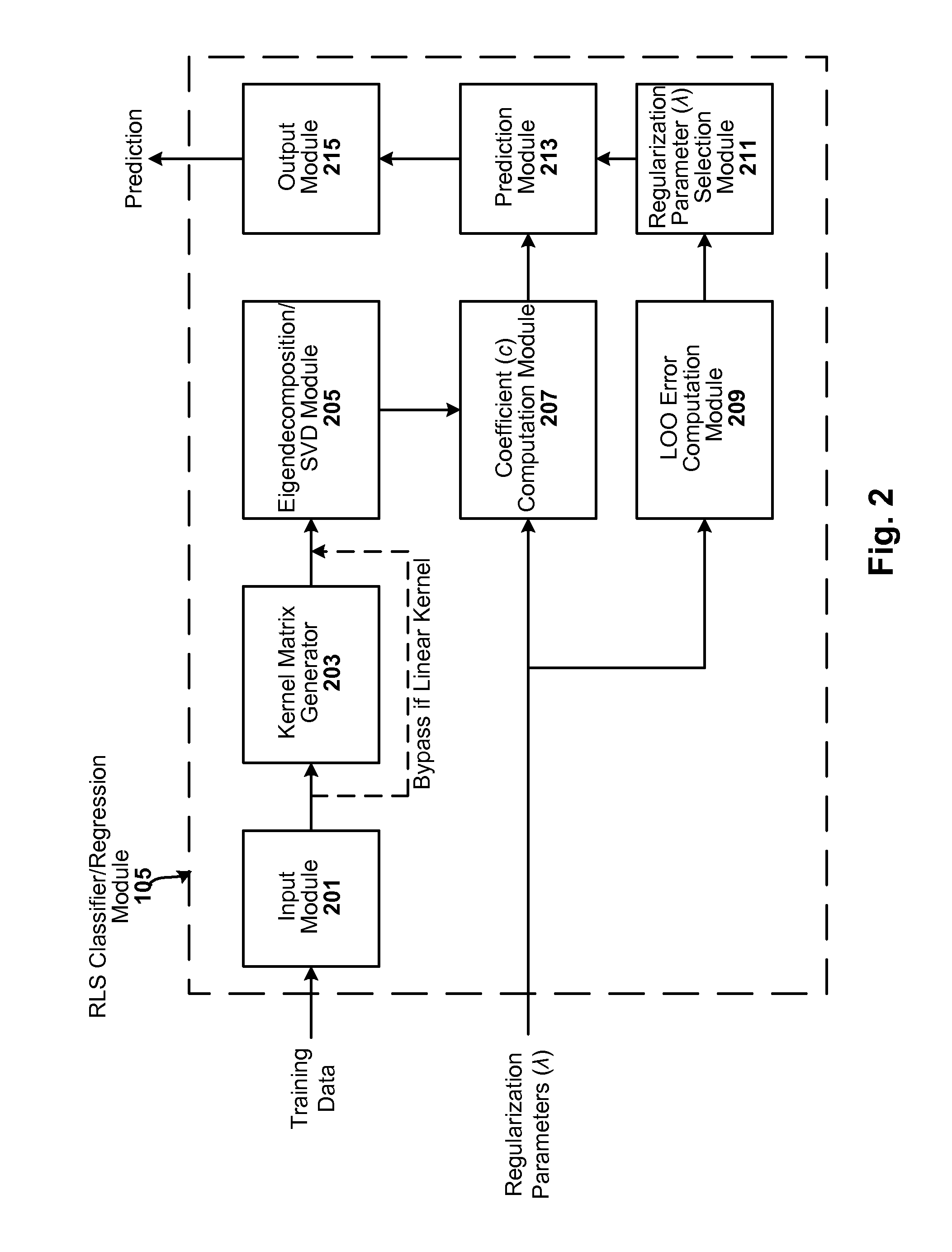Regularized least squares classification/regression
a regularized least squares and classification technology, applied in the field of machine learning, can solve the problems of poor choice of classification problems, rls has a serious problem, and the squared loss function
- Summary
- Abstract
- Description
- Claims
- Application Information
AI Technical Summary
Benefits of technology
Problems solved by technology
Method used
Image
Examples
Embodiment Construction
[0018] Techniques are disclosed that make using regularized least squares (RLS) more practical, and in particular, that decrease computational burdens associated with conventional techniques.
[0019] General Overview
[0020] In one embodiment of the present invention, a regularized least squares classifier (RLSC) is provided. As is known, classifiers are programmed or otherwise configured to receive input values (such as values of an object's features or a situation's characteristics), and to produce as an output a discrete label related to those input values. Face recognition, object tracking, room navigation, medical image analysis, and voice recognition are example applications in which classification is applied. Classifiers may be implemented as fixed classifiers or learning classifiers. In addition, note that the techniques described herein can also be applied to RLS regression problems, as will be appreciated in light of this disclosure.
[0021] As previously explained, the loss ...
PUM
 Login to View More
Login to View More Abstract
Description
Claims
Application Information
 Login to View More
Login to View More - R&D
- Intellectual Property
- Life Sciences
- Materials
- Tech Scout
- Unparalleled Data Quality
- Higher Quality Content
- 60% Fewer Hallucinations
Browse by: Latest US Patents, China's latest patents, Technical Efficacy Thesaurus, Application Domain, Technology Topic, Popular Technical Reports.
© 2025 PatSnap. All rights reserved.Legal|Privacy policy|Modern Slavery Act Transparency Statement|Sitemap|About US| Contact US: help@patsnap.com



